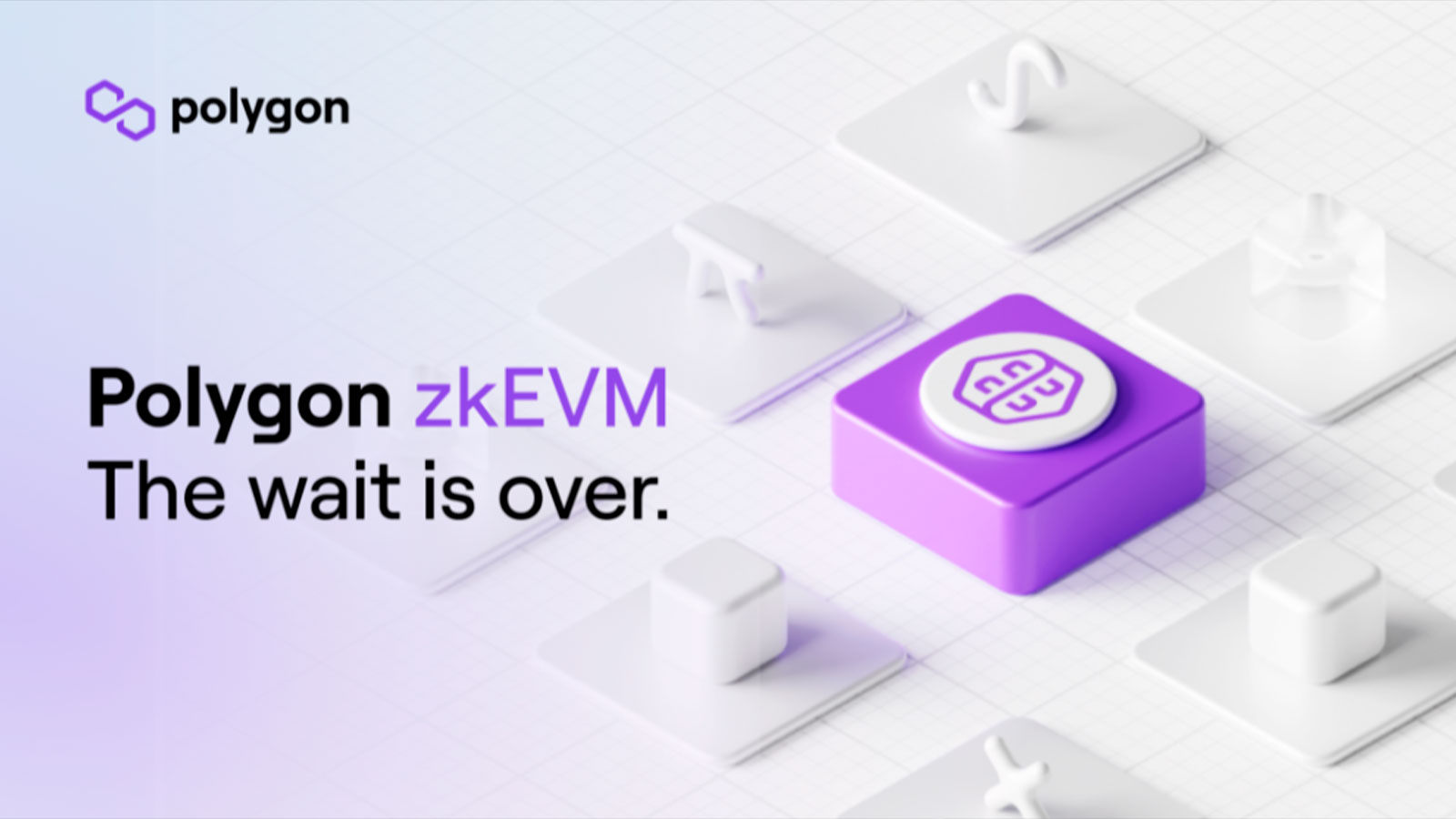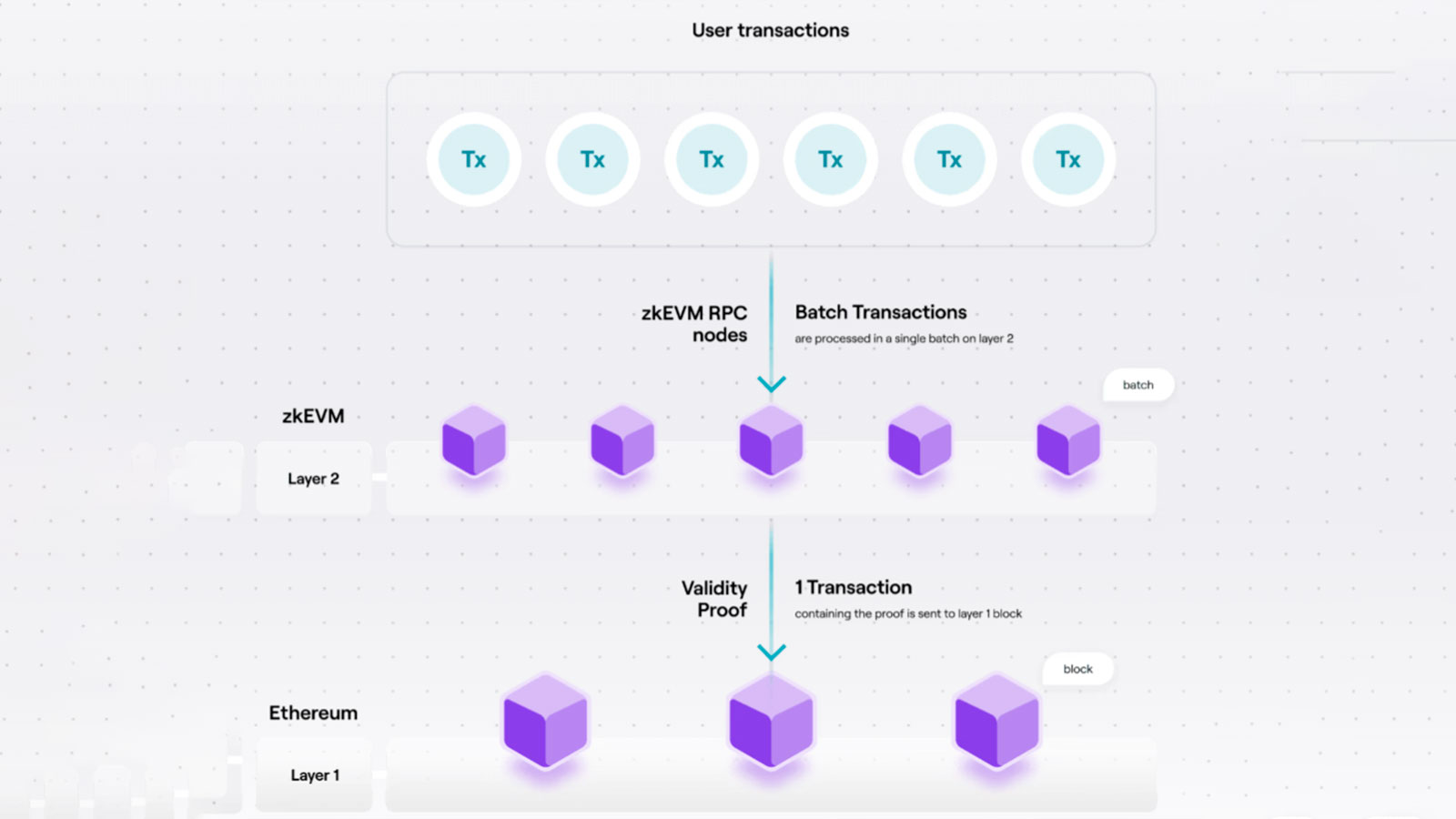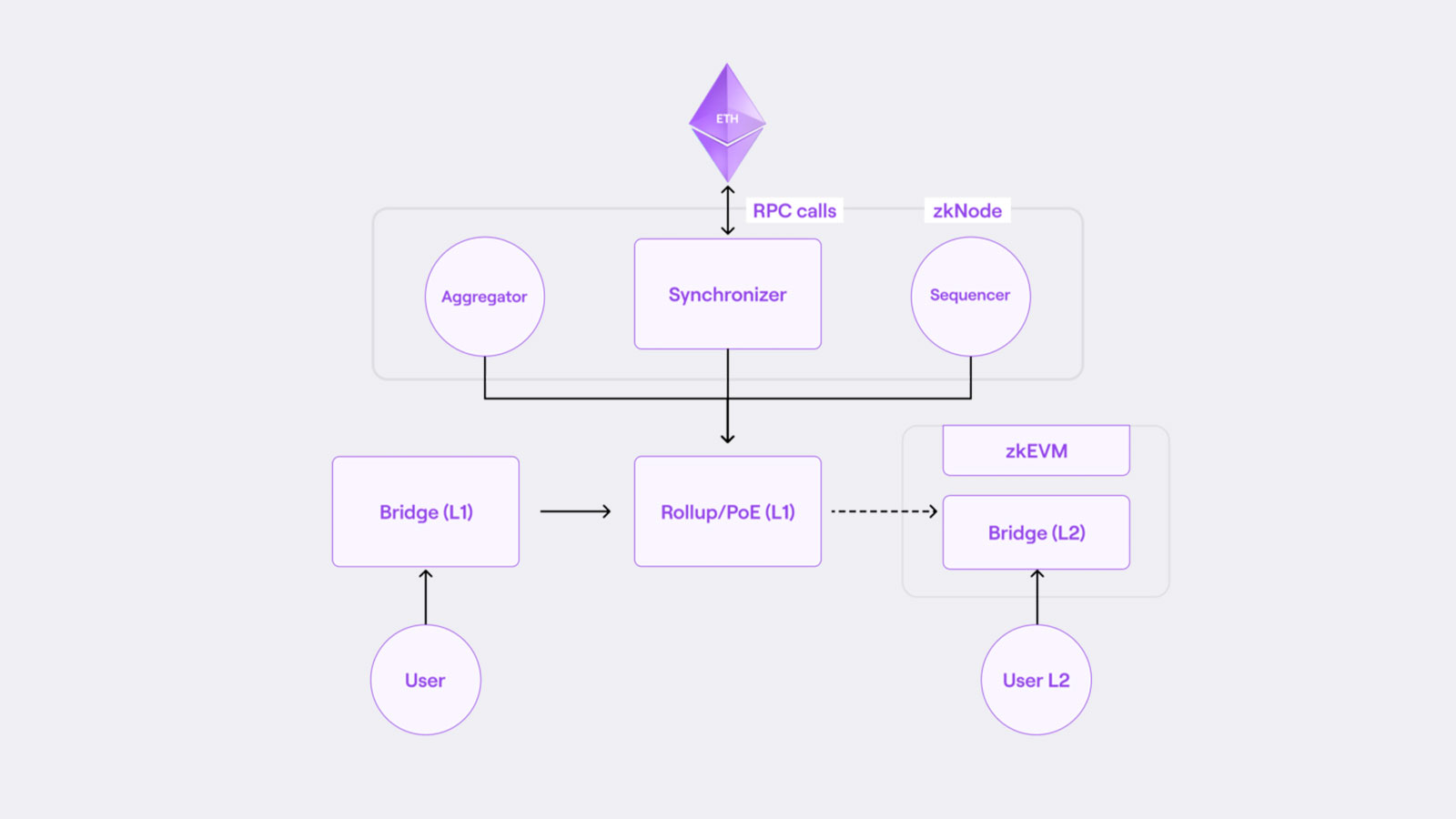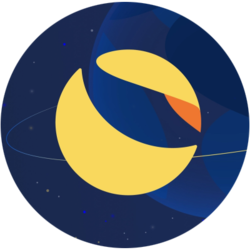On July 20, 2022, Polygon Community (MATIC), an ecosystem of Ethereum (ETH) scaling options, unveiled zkEVM, the newest addition to its stack of options. The brand new product is the primary open-source zk-rollup natively interoperable with EVM.
On this information, we’ll cowl the options of the brand new launch and the alternatives it opens for Ethereum (ETH) scaling and Web3 progress as a complete.
Polygon Community releases zkEVM: Why is this significant for crypto?
zkEVM (an abbreviation for “zero-knowledge Ethereum Digital Machine”) is a second-layer scalability protocol on the highest of Ethereum (ETH). Because of this it’s designed to make the operations of Ethereum (ETH) dApps sooner and cheaper with out compromising its decentralization and safety.

Even though second-layer options have been serving to Ethereum (ETH) scale since 2018, zkEVM launches to alter the narrative in L2s.
- zkEVM helps Ethereum (ETH) sensible contracts with out modifications, there isn’t any want to switch the code earlier than shifting from L1 to L2;
- zkEVM onboards all Ethereum (ETH) opcodes; each instrument from the “unique” Ethereum (ETH) can subsequently be applied in zkEVM;
- Utilizing on-chain knowledge permits customers to avoid wasting as much as 90% in charges;
- zkEVM has been open supply and MIT-licensed since day one: each Web3 staff can experiment with zkEVM and audit it;
- Superior zero-knowledge methods: recursive STARKS assure excessive scalability whereas zkSNARKS are built-in for price optimization.
With zkEVM launched, Polygon Community (MATIC) strengthened itself as the most efficient and cutting-edge staff in Ethereum’s L2s ecosystem.
What are Layer 2 options (L2s) — and why does Ethereum (ETH) want them?
Layer 2 options (additionally second-layer options, or L2s) are blockchain protocols constructed on the highest of the Ethereum (ETH) mainnet. As Ethereum (ETH) itself has a low bandwidth — it may well solely course of 15 transactions per second — it turns into too gradual and inefficient for contemporary decentralized purposes.
As such, builders determined to create methods designed to scale back “transactional strain” on the Ethereum (ETH) mainnet. Merely put, they partially course of the computations off-chain after which broadcast the outcomes to Ethereum. Layer 1 Ethereum (ETH), in flip, verifies these outcomes and consists of them into new blocks.
For the reason that inception of the primary Ethereum (ETH) L2 resolution, Rayden Community (RDN), which used cost channels not not like Bitcoin’s Lightning, a lot of groups launched their very own model of scaling designs. By 2022, rollups proved to be essentially the most spectacular method by way of useful resource effectivity, pace and lowered transaction prices.
What are zk-rollups and zk-proofs?
Zero-knowledge rollups, or zk-rollups, ought to be thought-about a category of second-layer options designed to advance the throughput of the Ethereum (ETH) mainnet. Zk-rollups bundle (roll up) a number of Ethereum (ETH) transactions into batches earlier than posting solely minimal knowledge to the Ethereum (ETH) mainnet.

Technically, a zk-rollup chain is an off-chain protocol that operates outdoors of Ethereum’s (ETH) mainnet however leverages on-chain Ethereum (ETH) sensible contracts. This sensible contract deconstructs and verifies the entire transfers “bundled” in a single L2 transaction.
Zk-proof is one other essential idea of L2 structure. On this case, “zero-knowledge” implies that these cryptographic proofs enable each events (L1 and L2) to show the correctness of a “assertion” with out revealing the assertion itself. Zk-rollups use proofs to confirm the correctness of off-chain state transitions with out the need of re-executing transactions on Ethereum (ETH) mainnet.
What’s Polygon Community (MATIC)?
Polygon Community (MATIC) was launched as Matic Community in October 2017. The venture is helmed by Ethereum (ETH) veterans Jaynti Kanani, Sandeep Nailwal, Anurag Arjun and Mihailo Bjelic. Initially, it was launched as a Plasma-based L2 on high of the Ethereum (ETH) community. Plasma is a category of proof-of-stake options for Ethereum (ETH) scaling; not not like rollups, its mechanisms periodically ship parts of transactions to Ethereum (ETH) in a compressed type.
In 2019, Polygon (then, Matic Community) raised $5.6 mln in its ICO. One 12 months later, the venture determined emigrate from Ethereum (ETH) to its personal blockchain — technically, Ethereum (ETH) sidechain. In 2021, the venture rebranded to Polygon Community and launched a full-scale ecosystem of L2 options for Ethereum.
At present, its stack consists of Polygon Proof-of-Stake, a blockchain that handles MATIC transactions and onboards Polygon-based dApps, and Polygon Supernets, purpose-made sub-blockchains. Additionally, Polygon Dusk privacy-focused rollup is in mainnet beta. Final however not least, its ecosystem of rollups — Avail, Zero, Miden and, most just lately, zkEVM — is below improvement.
zkEVM by Polygon Community: Ethereum (ETH) scaling, reconsidered
zkEVM is a brand new rollup design developed by Polygon Community (MATIC) engineers. It’s poised to radically streamline the builders’ expertise for dApps targeted on utilizing Ethereum’s L2s as a technical foundation.
Fundamentals
Launched on July 20, 2022, zkEVM is the newest addition to Polygon Community’s (MATIC) L2 scalability stack. zkEVM promotes itself as a first-ever EVM-compatible ZK-based rollup. The venture is 360° open supply: since its very first days, each Ethereum (ETH) fanatic can use, audit and fork its codebase.
Polygon Community’s zkEVM is targeted on reaching Ethereum-level safety and decentralization, drastically boosting throughput, efficiency and useful resource effectivity. zkEVM leverages Plonky2, a cutting-edge zk-based scaling expertise. Plonky2 makes very gentle proofs and facilitates recursive verification of SNARKS (“Succinct Non-Interactive Argument of Data”). This enables customers to verificate proofs at 100x lowered pace.

In addition to improved proof-generation instances, zkEVM creates alternatives for unbelievably low-cost transactions; each dApp on zkEVM is way extra cost-efficient than its Ethereum-based opponents.
Seamless migration from Ethereum (ETH)
However essentially the most spectacular “secret sauce” of the brand new product is its 100% compatibility with Ethereum (ETH). Builders can actually make the most of the identical devices they used whereas constructing on-chain purposes for Ethereum (ETH) mainnet.
Builders can run Ethereum’s sensible contract on zkEVM with out altering a single line of code. All Ethereum (ETH) instruments could be seamlessly built-in into zkEVM-based dApps: the brand new product will help all Ethereum (ETH) opcodes. Thus, Ethereum’s (ETH) battle-tested safety might be inherited by a new product:
EVM-equivalence implies that any sensible contract or dev software that you need to use on Ethereum can be utilized on Polygon #zkEVM. It’s similar to utilizing Ethereum, however with the groundbreaking scaling energy of ZK tech.
Unmatched useful resource effectivity
In addition to EVM equivalence, zkEVM leverages enforced censorship resistance structure and advocates a decentralized-by-default design. Polygon zkEVM employs an extendable EVM processor with a brand new zk-assembly language to remain on the slicing fringe of Web3 innovation.
Technically, Polygon zkEVM is powered by Polygon Zero’s (beforehand Mir Protocol) quickest zk-proof design in Web3. zkEVM’s zkSNARK makes use of the minimal potential assets of Ethereum’s L1 for extra environment friendly computations.
Timeline
After the official announcement of Polygon zkEVM’s launch in July 2022 and making its code-base open supply, Polygon Community (MATIC) engineers are heads down, getting ready for his or her public testnet launch.
As such, a public testnet could be reside as quickly as Q3, 2022. The mainnet launch of the game-changing protocol is tentatively scheduled for early 2023.
Backside line
Polygon Community, a number one ecosystem of Ethereum L2 scaling devices, unveiled its zkEVM rollup. Polygon zkEVM is ready to be “EVM-equivalent” because it helps all Ethereum (ETH) sensible contracts and improvement devices.
In addition to EVM equivalence, Polygon zkEVM melds super-low charges and near-zero latency with the battle-tested safety of the Ethereum (ETH) mainnet.







